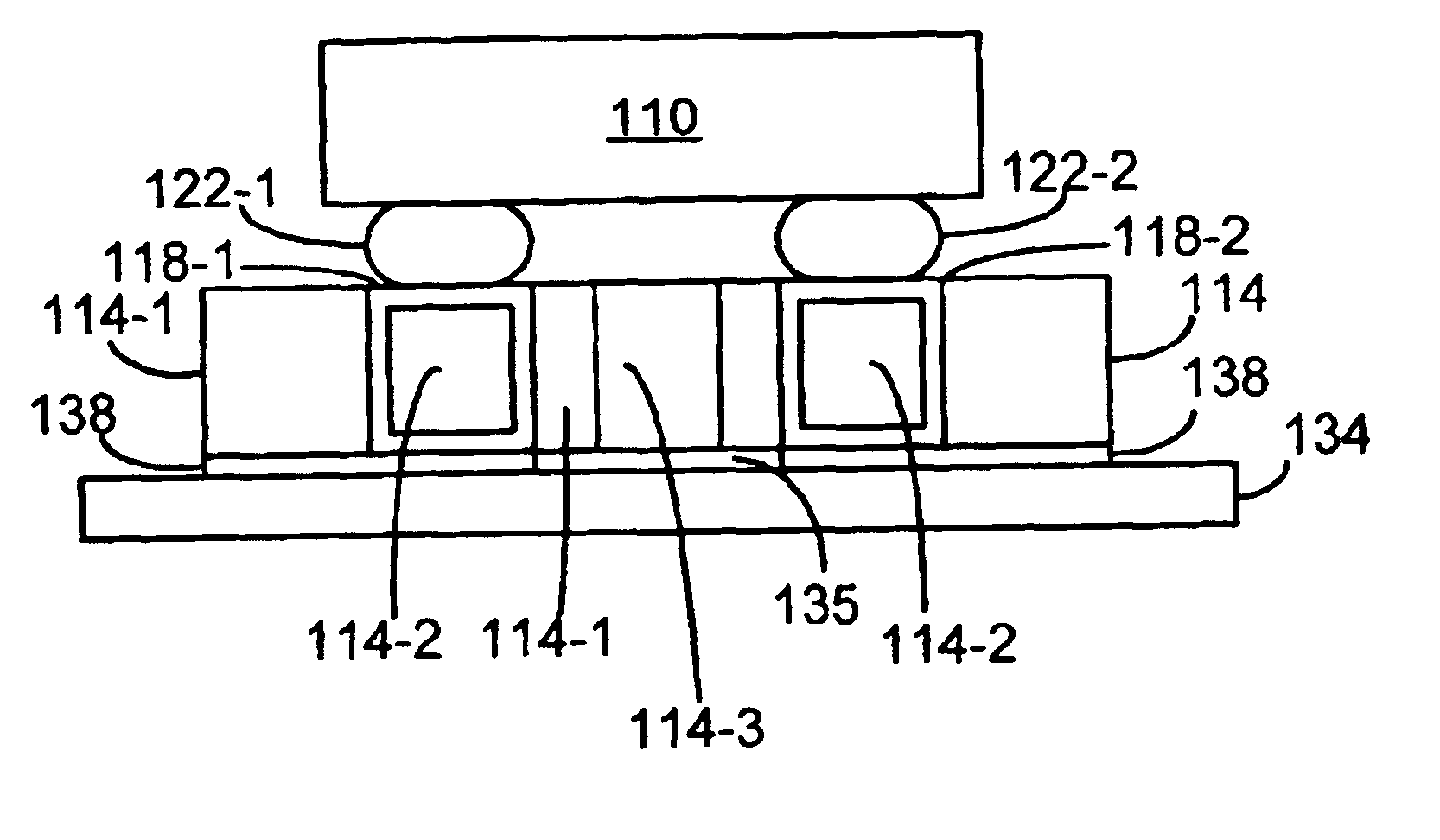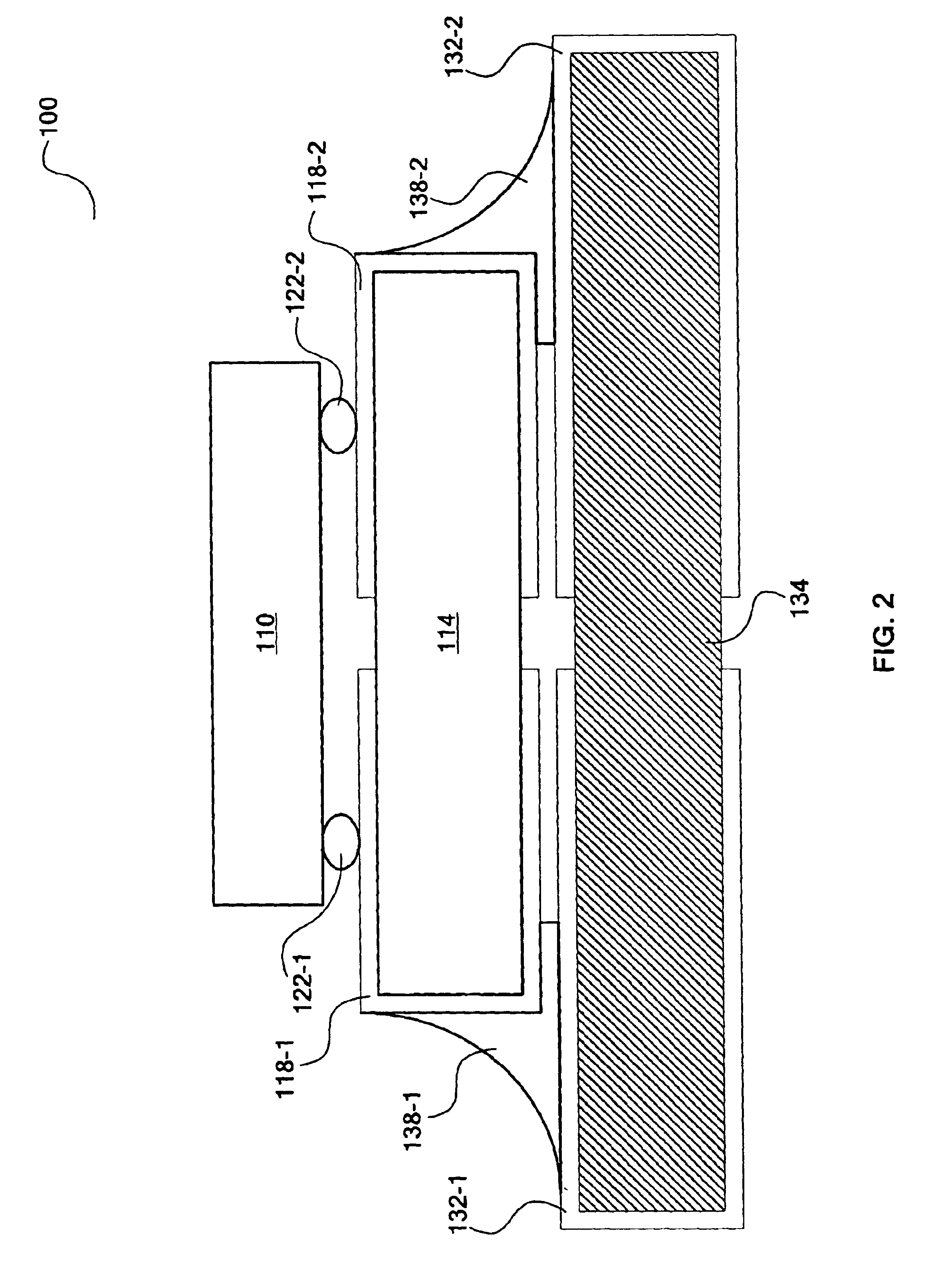Mount for semiconductor light emitting device
a technology of light-emitting devices and mounting brackets, which is applied in the direction of solid-state devices, printed circuit assembling, printed circuit manufacturing, etc., can solve the problems of how much heating the wire-bonds can endure, the p-contact generally transmits light poorly, and the heat resistance of the wire-bonds is high
- Summary
- Abstract
- Description
- Claims
- Application Information
AI Technical Summary
Problems solved by technology
Method used
Image
Examples
Embodiment Construction
According to embodiments of the invention, the submount on which an LED is mounted has electrical contacts on the side opposite the LED, such that the LED and submount are surface-mountable on another device, such as a board, by solder joints instead of wire bonds.
FIG. 2, illustrates an embodiment of the invention with solder joints. Electrical contacts for the die 110 of the light emitting device 100 are formed by coupling interconnects 122-1 and 122-2 to the die. Although the illustrated embodiments refer to solder balls, the interconnects may be made of elemental metals, metal alloys, semiconductor-metal alloys, solders, thermally and electrically conductive pastes or compounds (e.g., epoxies), eutectic joints (e.g., Pd-In-Pd) between dissimilar metals between the LED die and submount, Au stud-bumps, or configurations of solder besides balls, such as bars. In different embodiments the number of solder balls can be three or higher. Three solder ball designs provide a stable suppor...
PUM
 Login to View More
Login to View More Abstract
Description
Claims
Application Information
 Login to View More
Login to View More - R&D
- Intellectual Property
- Life Sciences
- Materials
- Tech Scout
- Unparalleled Data Quality
- Higher Quality Content
- 60% Fewer Hallucinations
Browse by: Latest US Patents, China's latest patents, Technical Efficacy Thesaurus, Application Domain, Technology Topic, Popular Technical Reports.
© 2025 PatSnap. All rights reserved.Legal|Privacy policy|Modern Slavery Act Transparency Statement|Sitemap|About US| Contact US: help@patsnap.com



